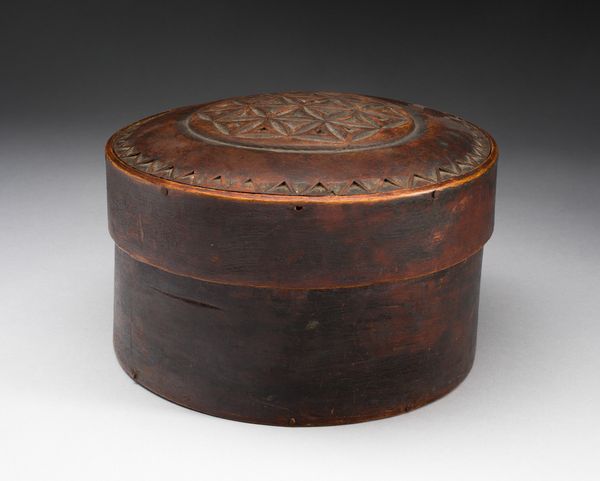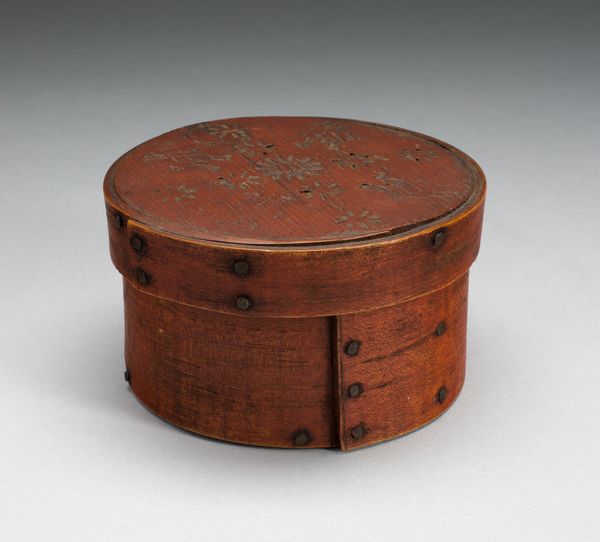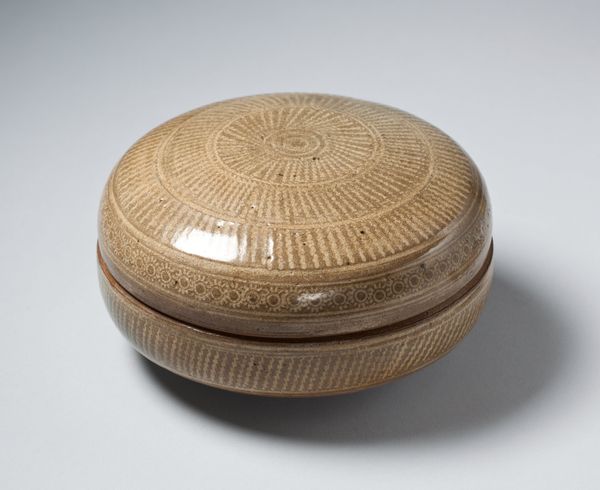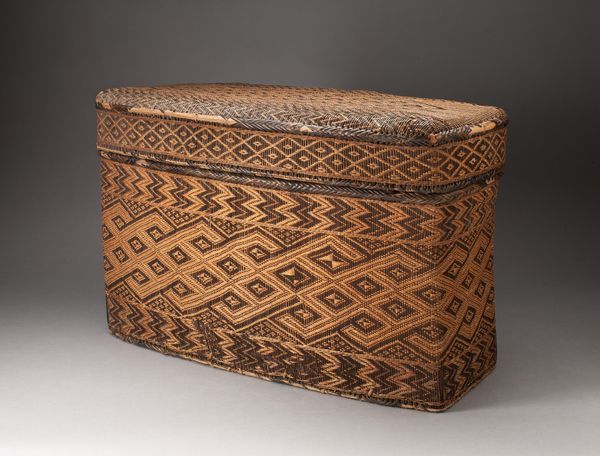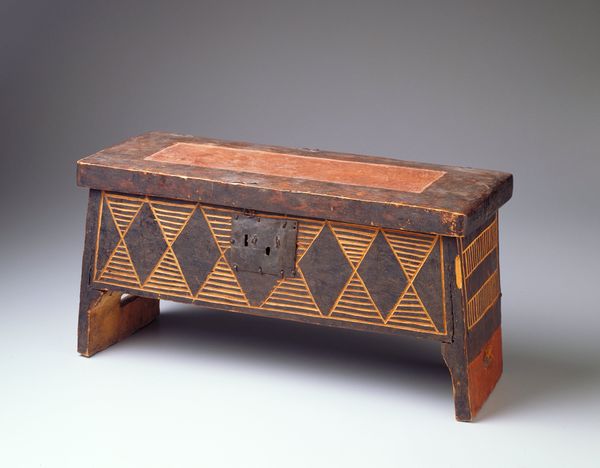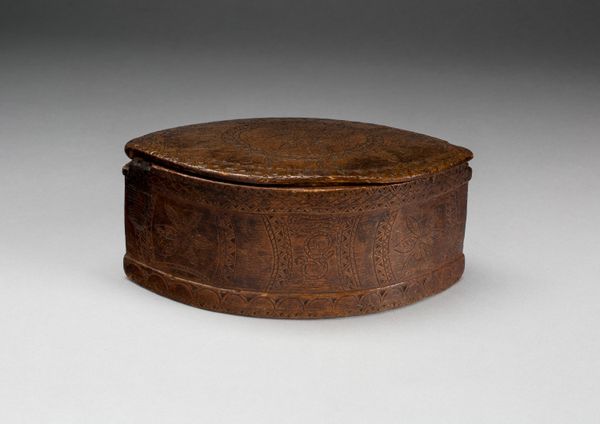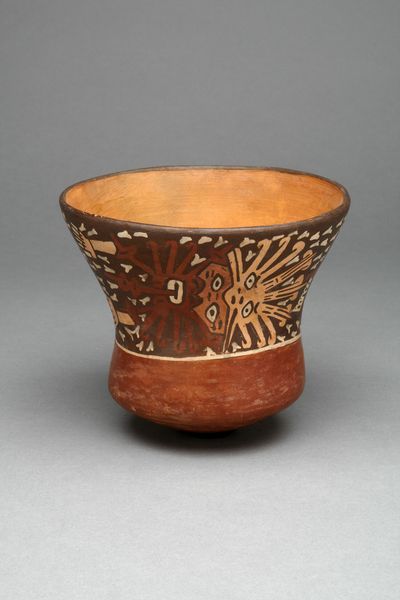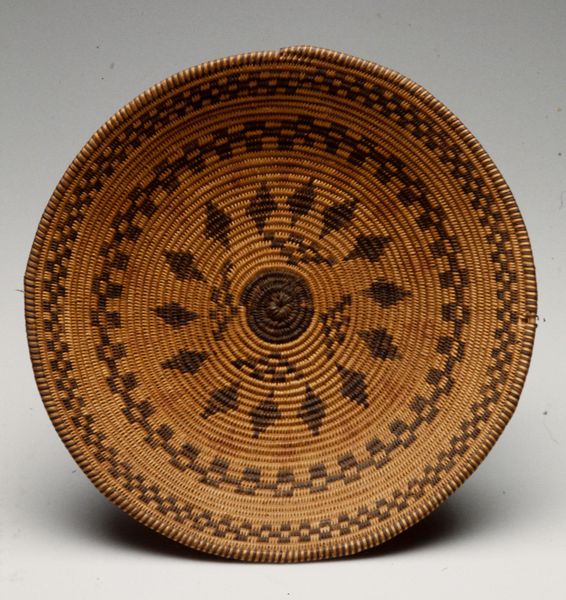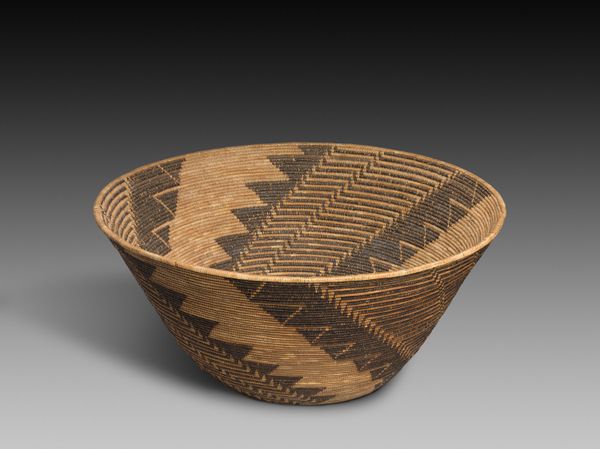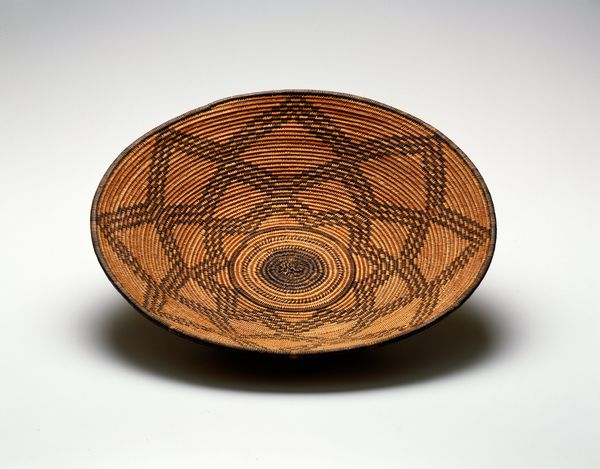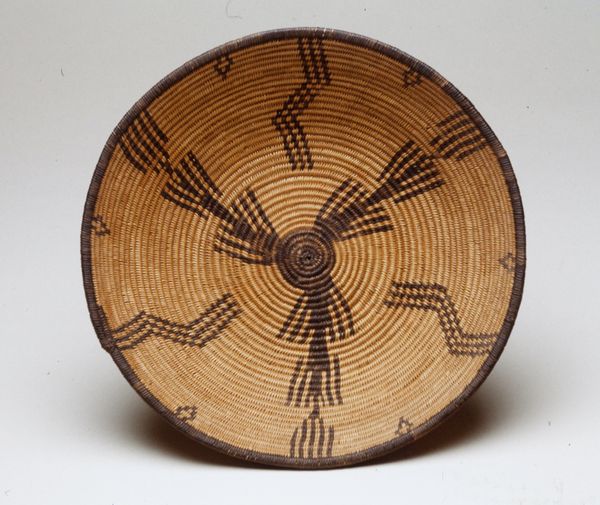
carving, wood
#
carving
#
folk-art
#
geometric
#
ceramic
#
wood
#
decorative-art
Dimensions: 10.5 × 22.2 ✕ 22.2 cm (4 1/8 × 8 3/4 ✕ 8 3/4 in.)
Copyright: Public Domain
Curator: Here we have a simple wooden box. The Art Institute of Chicago attributes it to an anonymous maker and dates its creation sometime between 1830 and 1870. Editor: Its quiet humility really strikes me. The warm brown of the wood, the unpretentious shape...it speaks of usefulness and unadorned beauty. Curator: Precisely. Note how the geometric patterns carved into the lid are arranged. Two spiraling sunbursts flank a central rosette of radiating petals. This arrangement creates a visual harmony. Editor: The carved geometric patterns seem quite deliberately folk art-oriented, contrasting perhaps with the functional nature of the vessel itself. I wonder what purpose it served and in what hands it traveled? Curator: Good question. These designs transform the ordinary into something elevated. They serve an aesthetic function. Furthermore, notice how the depth of the carving plays with light and shadow, activating the surface. Editor: I'm more intrigued by the making of it. I wonder about the maker’s tools, their access to wood. Were these decorations typical for such utilitarian objects at that time and in that location? Or was the creation itself of more cultural significance for the craftsperson and its original users? Curator: These are important considerations. But, equally crucial, is analyzing how the maker uses rhythm and symmetry to construct the lid's design, thereby achieving aesthetic harmony. Editor: Agreed. And recognizing too the object's silent testament to hands that labored, resources gathered, and a culture shaped by everyday objects. It bridges craft and life, high art and basic need. Curator: Ultimately, this "Box" demonstrates how formalism, in the use of geometric shape and arrangement, achieves beauty through its structure. Editor: And this particular vessel can remind us that the most unassuming objects can embody vast cultural stories, from the trees that became its timber to the hands and homes it served.
Comments
No comments
Be the first to comment and join the conversation on the ultimate creative platform.
